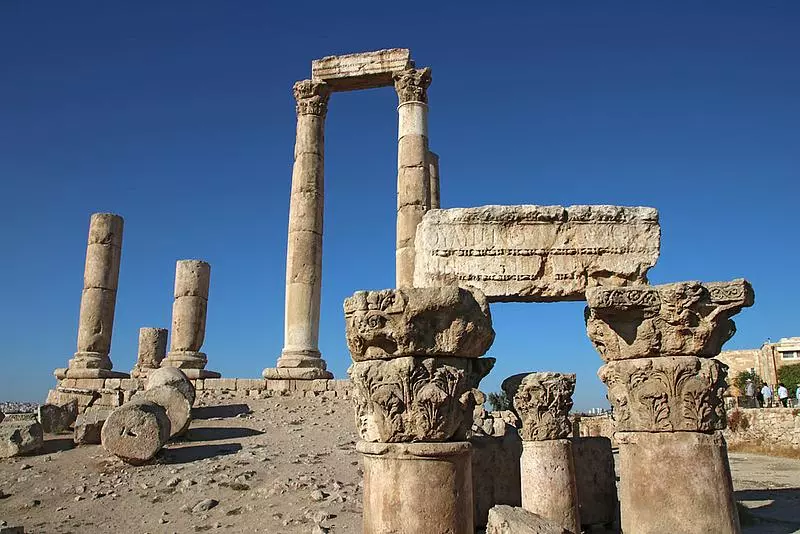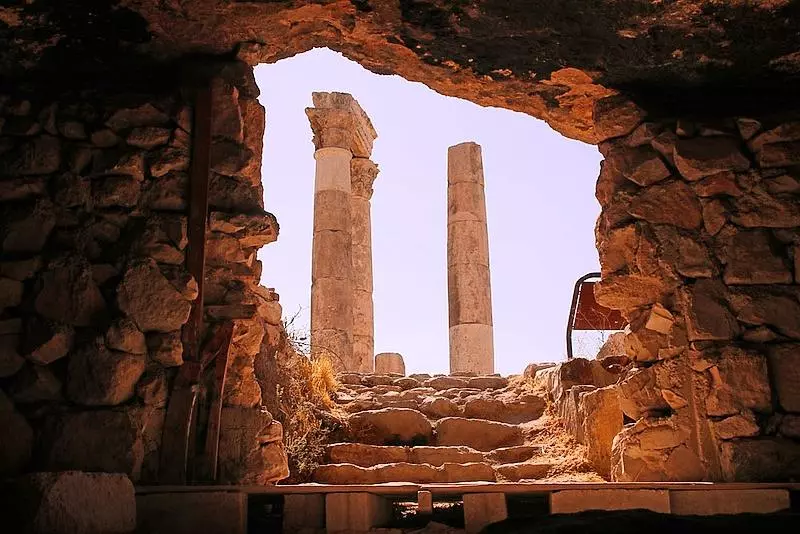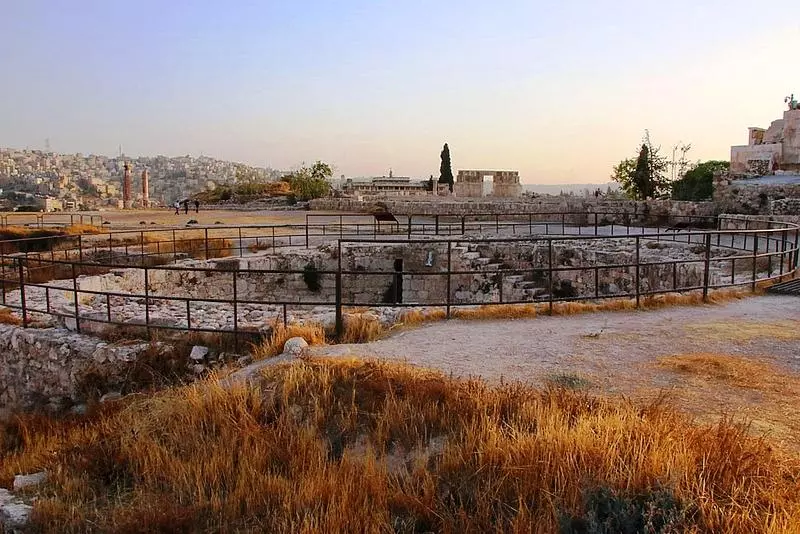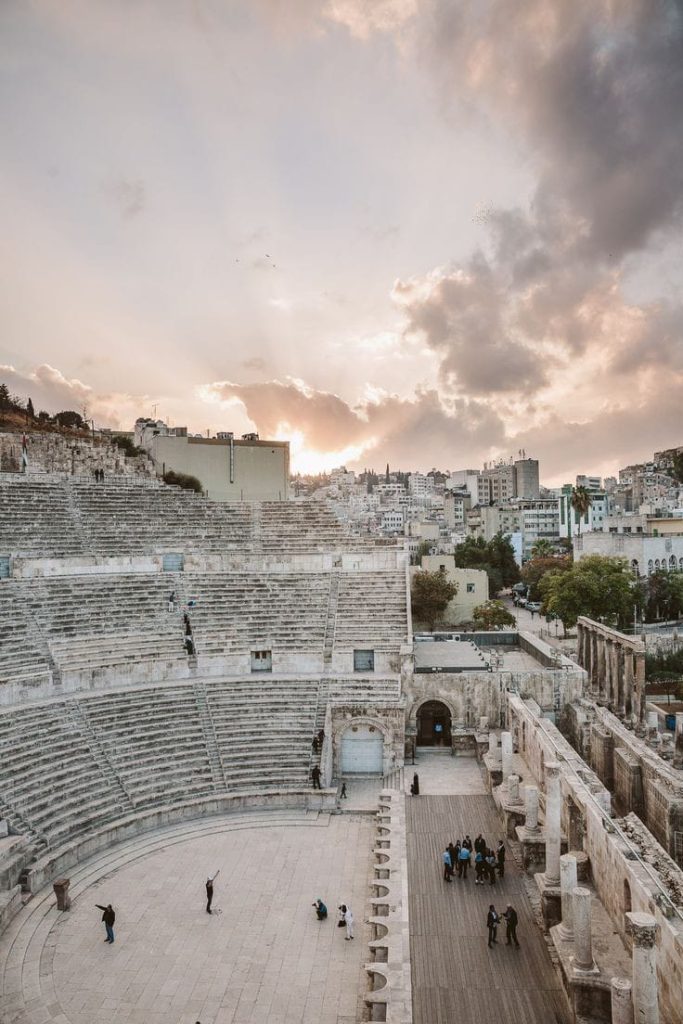The lowest nature reserve on earth !
Citadel of Amman: The Crown of Ancient Amman
Explore the timeless splendor of the Amman Citadel, where history unfolds across millennia atop the city’s highest hill.
The Citadel of Amman

The Citadel of Amman, perched atop Jabal Al-Qala’a, is one of the most significant historical and archaeological sites in Jordan. Overlooking downtown Amman, this ancient hilltop has been continuously inhabited since the Bronze Age, serving as a strategic stronghold for various civilizations, including the Ammonites, Romans, Byzantines, and Umayyads. The site is home to remarkable ruins such as the Temple of Hercules, a grand Roman structure dating back to the 2nd century AD, and the Umayyad Palace, an impressive early Islamic-era complex. These remnants reflect the rich and diverse history of the region, making the Citadel a key cultural and historical landmark.
Beyond its architectural wonders, the Citadel also houses the Jordan Archaeological Museum, which preserves artifacts from different periods of Jordan’s past, including pottery, statues, and inscriptions. Visitors can explore the site’s ancient walls, offering breathtaking panoramic views of Amman’s modern cityscape, which contrasts beautifully with the ruins of the past. The Citadel remains a symbol of Amman’s deep-rooted heritage, attracting historians, archaeologists, and tourists eager to uncover the layers of history that have shaped Jordan’s capital.
key sites of specific historical and cultural interest:
Temple of Hercules – This grand Roman structure, dating back to the 2nd century AD, is one of the most iconic features of the Citadel. The towering columns and massive ruins offer a glimpse into the architectural prowess of the Roman Empire.
Umayyad Palace – A sprawling complex from the early Islamic period, this palace was once a grand residence. Today, visitors can explore its impressive remains, including large courtyards, halls, and a remarkable throne room.
The Jordan Archaeological Museum – Situated within the Citadel, this museum houses a rich collection of artifacts from various periods of Jordan’s history, including ancient pottery, sculptures, and inscriptions that tell the story of the region’s past.
Byzantine Church – A beautifully preserved church from the Byzantine period, showcasing intricate mosaic floors and architecture typical of the era.
The Citadel Walls and Gates – Visitors can walk along the ancient walls of the Citadel, with panoramic views of Amman and the surrounding areas, and explore the various gates that were once used to control access to this important site.
Each of these locations within the Amman Citadel offers a unique insight into the city’s long and varied history, making it a must-visit destination for anyone interested in exploring Jordan’s heritage.


The Temple of Hercules: Amman’s Ancient Marvel
The Temple of Hercules, located at the Amman Citadel, is one of the most iconic and awe-inspiring monuments in the city. Dating back to the 2nd century AD during the Roman Empire, the temple was dedicated to the mighty Hercules, the legendary figure known for his strength and heroic deeds. Although only a few columns remain standing today, the grandeur of the site still shines through, offering a glimpse into the architectural and cultural significance of ancient Roman worship.
The temple is part of a larger Roman complex that once served as a major religious and civic center in Amman. The remaining pillars, some of which are enormous, reveal the scale and magnificence of the structure. Visitors can also see the impressive base of the temple, which is adorned with carvings that further highlight the site’s rich history. With its commanding views of the surrounding city, the Temple of Hercules stands as a testament to Amman’s ancient roots, offering a fascinating connection to the past while standing tall amid the modern capital’s hustle and bustle.
The Byzantine Church: A Glimpse into Amman’s Christian Heritage
Nestled within the Amman Citadel, the Byzantine Church offers a fascinating look into the city’s Christian past. Dating back to the 5th or 6th century AD, this well-preserved church is a testament to the religious significance Amman held during the Byzantine period. The church features intricate mosaics, some of which are still visible today, depicting scenes of Christian iconography and daily life, offering a glimpse into the artistic and spiritual practices of the time.
The church’s architectural style reflects the influence of Byzantine design, with a basilica layout that was common in early Christian structures. The remains of the church, including its mosaic floors and foundations, highlight the region’s historical importance as a crossroads for different cultures and religions. As one of the oldest Christian sites in Amman, the Byzantine Church provides visitors with a deeper understanding of the city’s diverse cultural heritage, making it a must-see for anyone interested in the historical development of Jordan’s religious landscape.
The Umayyad refers to the first great dynasty of the Islamic Caliphate, which ruled from 661 to 750 AD, following the period of the Rashidun Caliphs. This dynasty is significant in Islamic history for its establishment of the Umayyad Caliphate, with its capital initially in Damascus (modern-day Syria), before the Abbasid Caliphate succeeded it. The Umayyads were known for their expansion of the Islamic Empire, spreading across vast regions from Spain in the west to India in the east.
In the context of Amman, the Umayyad Palace at the Citadel is a prime example of the early Islamic period’s architectural achievements. Built during the Umayyad Caliphate, the palace complex features grand structures with large courtyards, residential areas, and public spaces. It highlights the early Islamic architectural style, with the use of domes, arches, and intricately designed rooms. The palace was part of a wider network of Umayyad palaces that were constructed in various parts of the empire.
Today, the Umayyad Palace in Amman is a fascinating historical site, giving visitors a glimpse into the political and cultural life of the Umayyad period, showcasing their architectural innovations and their role in shaping the early Islamic world.
Other Archaeological highlights

In addition to the well-known sites like the Temple of Hercules, Umayyad Palace, and Byzantine Church, the Amman Citadel and surrounding areas boast several other remarkable archaeological highlights that provide insight into the city’s rich history. Some of these include:
The Roman Theater – Located in downtown Amman, this ancient amphitheater is one of the largest and best-preserved in the Middle East. Built in the 2nd century AD, it once seated around 6,000 spectators and is still used today for cultural events and performances.
The Nymphaeum – A monumental Roman public fountain situated near the Roman Theater. This impressive structure was built in the 2nd century AD to provide water to the city’s citizens, featuring ornate sculptures and intricate carvings.
The Odeon – A smaller, semi-circular theater near the Roman Theater, used for musical performances and smaller gatherings. It dates back to the 2nd century AD and provides a more intimate setting compared to its larger counterpart.
The Umayyad Baths – These ancient public baths, located near the Umayyad Palace, offer a glimpse into the daily life of people during the early Islamic period. They feature well-preserved heating systems and bath chambers, reflecting the advanced engineering skills of the time.
The Cisterns – Several large cisterns (water storage tanks) can be found at the Citadel, some dating back to the Roman and Byzantine periods. These cisterns were used to store water for the city and showcase the engineering expertise in managing water supply.
The Lion’s Gate – An ancient gate leading into the citadel, decorated with lion motifs, symbolizing power and protection. It’s an important entry point into the archaeological site and reflects the blend of cultures throughout history.
These archaeological sites, along with the Citadel’s ruins, provide an incredible opportunity to walk through the layers of history and experience the many civilizations that shaped the Amman we see today.
